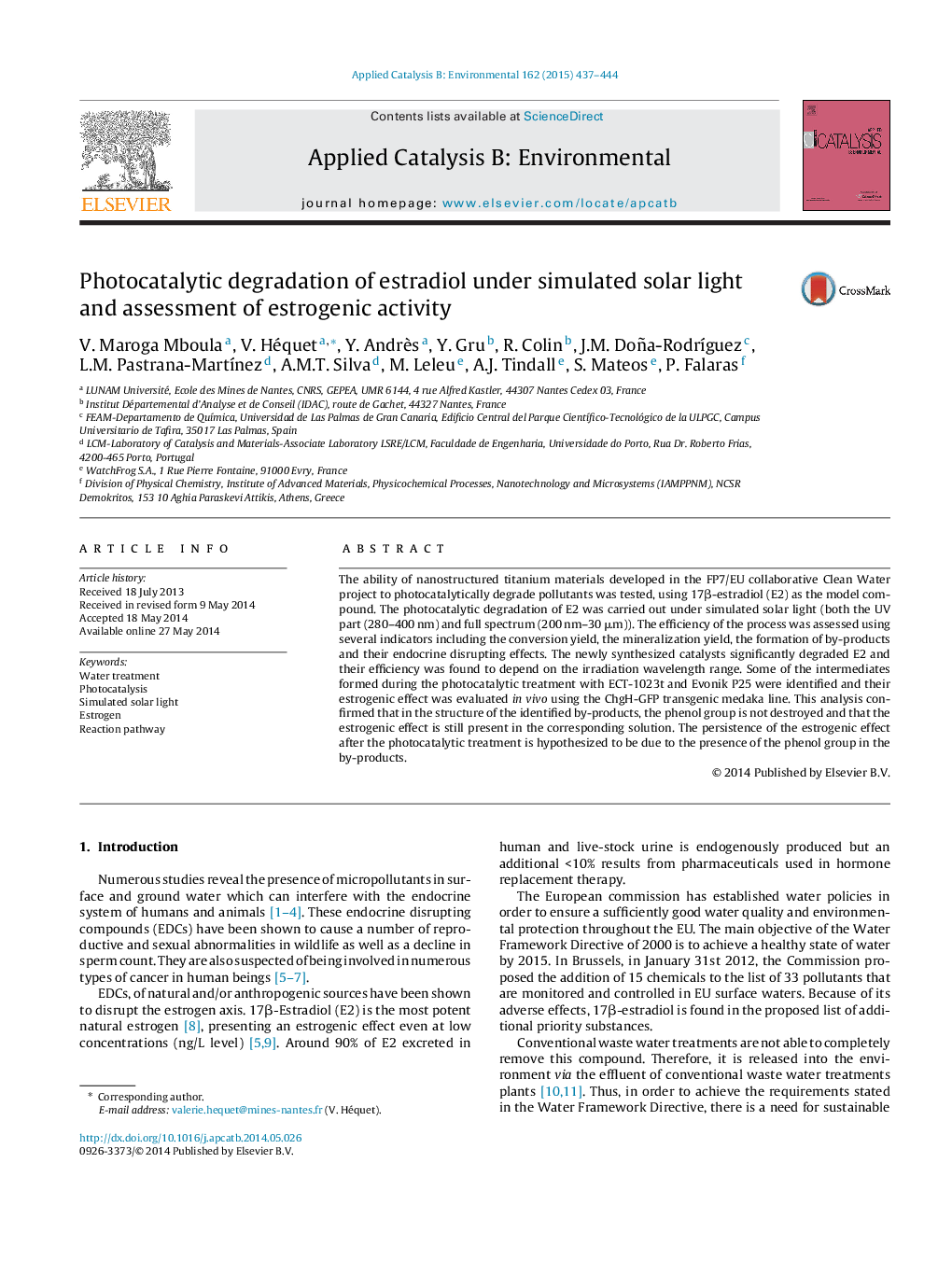| Article ID | Journal | Published Year | Pages | File Type |
|---|---|---|---|---|
| 45665 | Applied Catalysis B: Environmental | 2015 | 8 Pages |
•The efficiency of the catalysts depends on the irradiation type.•The phenol group of estradiol is not eliminated during the photocatalytic treatment.•The estrogenic effect persists following the photocatalytic treatment.
The ability of nanostructured titanium materials developed in the FP7/EU collaborative Clean Water project to photocatalytically degrade pollutants was tested, using 17β-estradiol (E2) as the model compound. The photocatalytic degradation of E2 was carried out under simulated solar light (both the UV part (280–400 nm) and full spectrum (200 nm–30 μm)). The efficiency of the process was assessed using several indicators including the conversion yield, the mineralization yield, the formation of by-products and their endocrine disrupting effects. The newly synthesized catalysts significantly degraded E2 and their efficiency was found to depend on the irradiation wavelength range. Some of the intermediates formed during the photocatalytic treatment with ECT-1023t and Evonik P25 were identified and their estrogenic effect was evaluated in vivo using the ChgH-GFP transgenic medaka line. This analysis confirmed that in the structure of the identified by-products, the phenol group is not destroyed and that the estrogenic effect is still present in the corresponding solution. The persistence of the estrogenic effect after the photocatalytic treatment is hypothesized to be due to the presence of the phenol group in the by-products.
Graphical abstractFigure optionsDownload full-size imageDownload as PowerPoint slide
